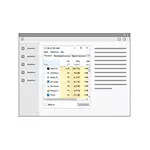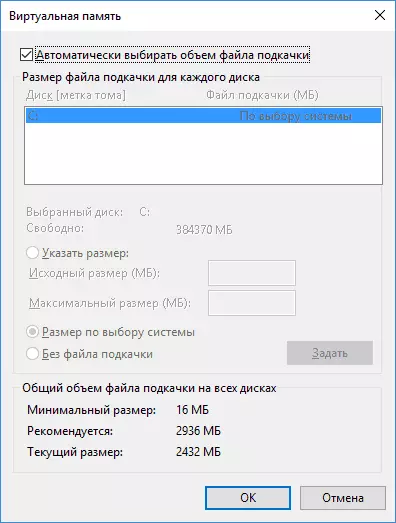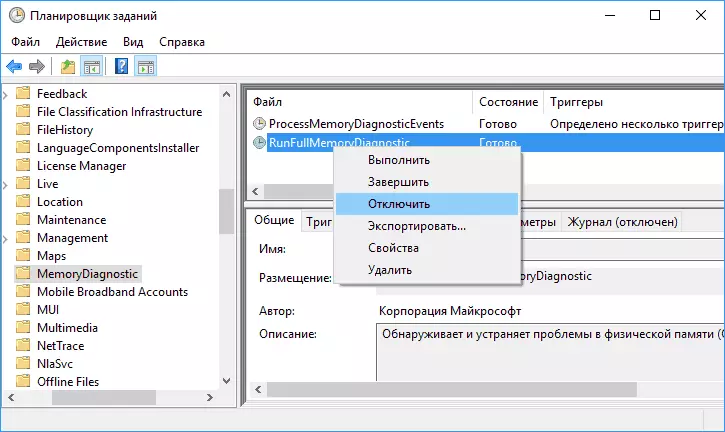
The system "System and Compressed Memory" in Windows 10 is one of the components of the new OS memory management system and performs the following function: Reduces the number of references to the paging file on the disk by the data in the compressed form to the RAM instead of recording On the disk (in theory, it should speed up the work). However, according to reviews, the function does not always work as expected.
Note: If you have a large amount of RAM and at the same time, you use demanding program resources (or open 100 tabs in the browser), while the "system and compressed memory" uses a lot of RAM, but does not cause performance problems and not Loads the processor for tens of percent, then as a rule is a normal operation of the system and you have nothing to worry about.

What to do if the system and compressed memory loads the processor or memory
Next - a few most likely reasons that the specified process consumes too many computer resources and a step-by-step description of what to do in each of the situations.Equipment drivers
First of all, if the problem with the processor loading the "system and compressed memory" process occurs after exiting sleep (and everything works fine when rebooting), or after a recent reinstall (as well as reset or update) Windows 10, you should pay attention to your drivers motherboard or laptop.
This should consider the following points.
- Most often, the problem can cause power management drivers and drivers of disk systems, in particular Intel Rapid Storage Technology (Intel RST), Intel Management Engine Interface (Intel Me), ACPI drivers, specific AHCI or SCSI drivers, as well as separate on some laptops (various Firmware Solution, UEFI Software and the like).

- Usually, Windows 10 itself installs all these drivers and in the device manager you see that everything is in order and "Driver does not need update." However, these drivers can be "not those", which causes problems (when you turn off and out of sleep, with the work of compressed memory and others). In addition, even after installing the desired driver, a dozen can "update" it again by returning problems in the computer.
- Solution - download drivers from the official site of the laptop or motherboard manufacturer (and not install from the Pak driver) and install them (even if they are for one of the previous versions of Windows), after which it is to prohibit Windows 10 to update these drivers. About how to do this I wrote in the Windows 10 instructions does not turn off (where the causes are echoing with the current material).
Separately, pay attention to the video card drivers. The problem with the process can be in them, and it is solved in different ways:
- Installation of the latest official drivers from AMD, NVIDIA, Intel manually.
- On the contrary, removing drivers using the Display Driver Uninstaller utility in safe mode and the subsequent installation of older drivers. It often works for old video cards, for example, GTX 560 can work without problems with driver version 362.00 and cause problems with performance on newer versions. More about this in the instructions Installing NVIDIA drivers in Windows 10 (all the same will be for other video cards).
If the drivers manipulation did not help, try other ways.
Package file parameters
In some cases, the problem (in this case - the bug) with the load on the processor or memory in the described situation can be solved in a simpler way:
- Turn off the paging file and restart the computer. Check if there are no problems with the "System and Compressed Memory" process.
- If there are no problems, try to turn on the paging file and perform a reboot, perhaps the problem will not happen again.

- If repeated, try repeating step 1, then set the size of the Windows 10 paging file manually and restart the computer again.
Details about how to disable or change the parameters of the paging file, you can read here: Windows 10 paging file.
Antivirus
Another possible reason for the load with a compressed memory process is the incorrect operation of the antivirus when checking the memory. In particular, this may occur if you install the antivirus without supporting Windows 10 (that is, any outdated version, see the best antivirus for Windows 10).It is also possible that you have several programs to protect the computer that conflict with each other (in most cases, more than 2 antiviruses, not counting the built-in Windows 10 defender, they cause certain problems affecting the system performance).
Separate reviews on the problem say that in some cases, the firewall modules in the antivirus may cause the load displayed for the "System and Compressed Memory" process. I recommend checking, temporarily disabling network protection (firewall) in your antivirus.
Google Chrome.
Sometimes manipulation with the Google Chrome browser allows you to correct the problem. If you have this browser and, especially, works in the background (or the load appears after the browser's short use), try the following things:
- Turn off the video acceleration video in Google Chrome. To do this, go to the settings - "Show Advanced Settings" and remove the "Use Hardware Acceleration" mark. Restart the browser. After that, in the address bar, enter Chrome: // Flags / Find on the Hardware Acceleration for Decoding Video Decoding, disconnect it and restart the browser again.

- In the same way in the settings, disable "Do not disable the services running in the background when closing the browser."
After that, try to restart the computer (it is to reboot) and pay attention to whether the process "system and compressed memory" shows the same way as before when working.
Additional solution solutions
If none of the described methods helped solve problems with the load caused by the "System and Compressed Memory" process, here are some more untested, but according to some reviews sometimes triggering methods to correct the problem:
- If you are used by Killer Network drivers, they can cause a problem. Try to delete them (or delete, and then set the latest version).
- Open the task scheduler (through the search in the taskbar), go to the "Master Planner Library" - "Microsoft" - "Windows" - "MEMORYDIAGNOSTIC". And disable the "RunfullMemoryDiagnostic" task. Restart the computer.

- In the Registry Editor, go to the HKEY_LOCAL_MACHINE \ SYSTEM \ CONTROLSET001 \ SERVICES \ NDU section and set the value 2. Close the registry editor and restart the computer.

- Check the integrity of Windows 10 system files.
- Try to disable the SuperFetch service (press the Win + R keys, enter Services.msc, find a service with the name Superfetch, double click on it - stop, then select the type of running "disabled", apply the settings and restart the computer).
- Try disable the quick launch of Windows 10, as well as sleep mode.
I hope one of the solutions will allow you to cope with the problem. Do not forget also about checking a computer for viruses and malware, they may also cause abnormal operation of Windows 10.
